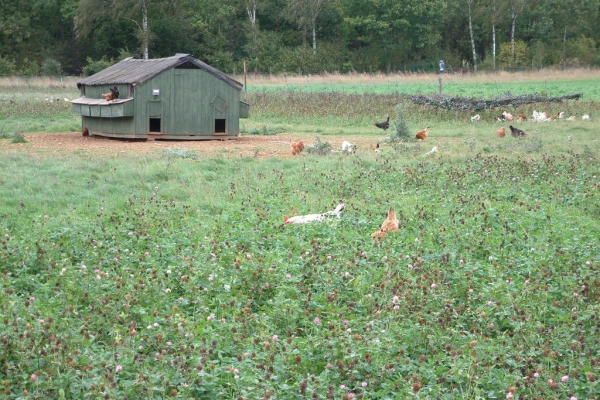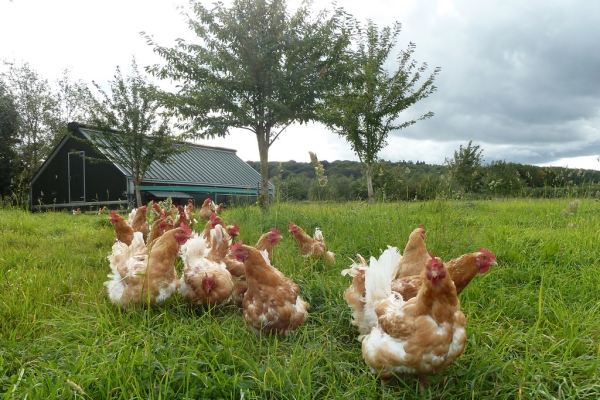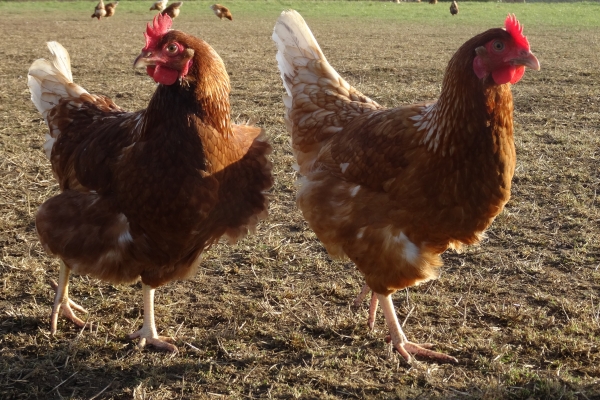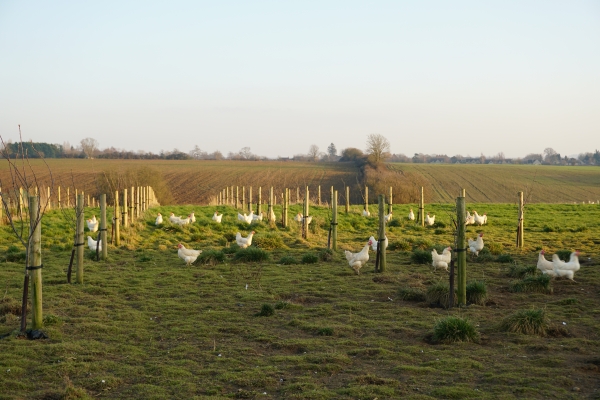Fulfilling 100% organic poultry diets: Concentrates
ICOPP Technical Note 1
Resource explained
This guide analyses the potential of locally produced and novel protein sources as viable, alternative feed sources for the organic poultry industry.
The 5-page leaflet (Technical Note 1 of a series of 4) is an output of the ‘Improved Contribution of local feed to support 100% Organic feed supply to Pigs and Poultry’ project, which ran from 2011 to 2014.
It sets out the nutrient requirements of poultry and stresses the importance of methionine, which is the most limiting amino acid in poultry production. The most promising sources of protein from plant and animal origins are profiled, together with the scope for concentrating protein sources through further processing. The pros and cons of using novel protein sources such as larvae meal, earthworm meal and algae are looked at. Other nutritional considerations, such as using roughage and fresh or dried fodder and silage are also referred to.
Findings & recommendations
- Correctly balancing the protein and amino acid requirements ensures productivity, bird welfare and sustainability.
- There are many options of locally produced feeds of 100% organic origin, however, allowing for practical, environmental and economic factors, the list of viable options is currently quite small. Some novel sources of protein would require investment in processing and marketing and some would require changes in legislation (e.g. the use of larvae meal).
- Oilseeds and in particular European-produced soya bean meal seem the most promising long term alternative to imported soya bean meal.
- Sunflower seed and rapeseed have potential as widely available protein crops due to the high value of extracted oil for other markets.
- Legumes such as peas, beans and sainfoin seeds are viable options because of their relatively high digestible methionine content, and are widely available.
- Reducing the protein and energy concentration of poultry diets, and with it the amino acid concentration, thereby increasing feed intake, is another option to help fulfil the requirement of 100% organic diets.
- Hens can obtain about 5 -10% of their nutritional demands from foraging. Access to a grass-clover covered pasture can substantially contribute to the protein supply for poultry.











